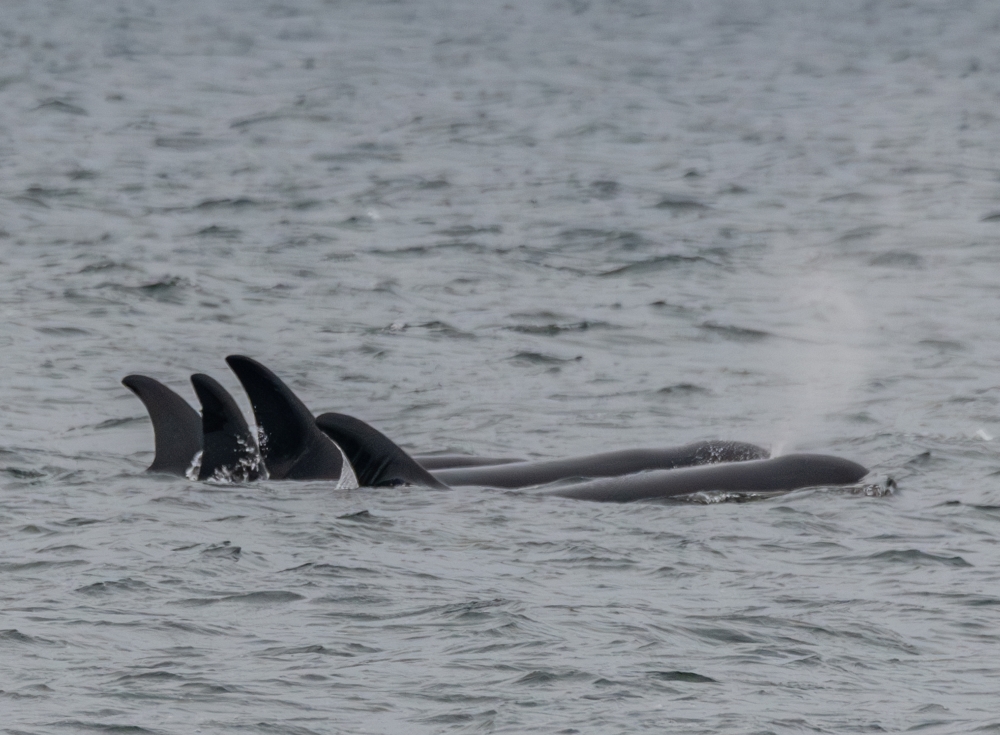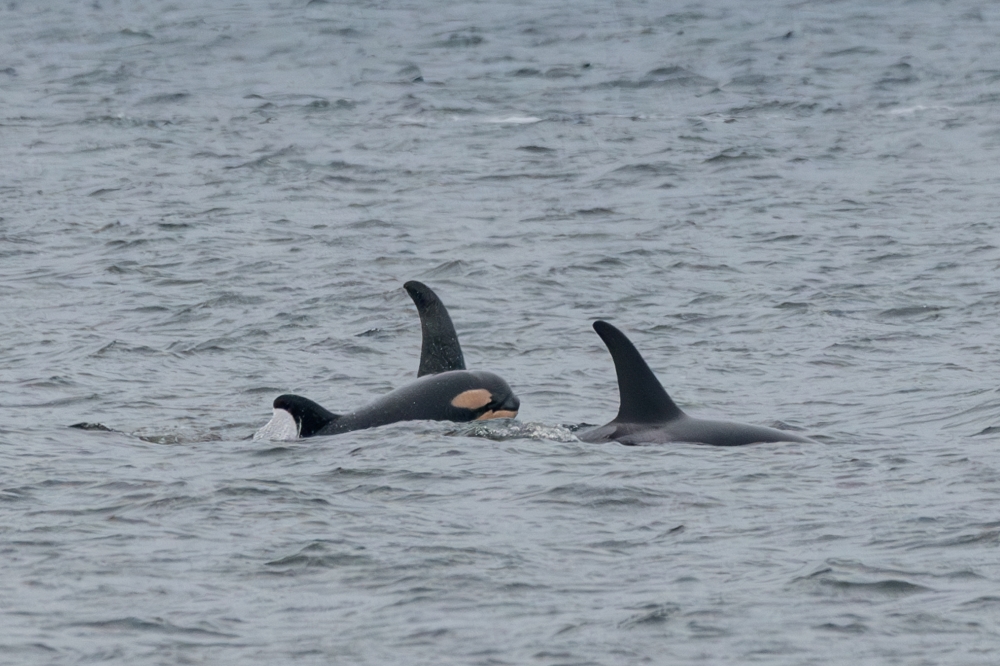Two years ago, Tracy Thomsen counted herself among the 60-or-so people who witnessed a pod of nine orcas rubbing themselves on the rocky shoreline of a Sechelt beach. And on Jan. 23, she was reunited with the whales, but this time she and her daughter were alone on the beach.
A Facebook memory of her sighting in 2022 popped up for Thomsen earlier this week, and inspired her and her family to try to see whales. They’d been spotted earlier that day swimming from Roberts Creek and Davis Bay, so Thomsen knew they were making their way up the coast. She said to her daughter Kindle, “Today might be our lucky day.”
She was right. From the shore of Sea Fiddler beach, she recorded a video of the whales. You can hear Thomsen and Kindle exclaiming, “Here they come!” and “They’re going to, like, eat us!”
The whales turned the corner and, instead of carrying on straight, they made a sudden turn.
As they pass — only metres from where the water meets the shore — the killer whales’ fins slip quickly in and out of the water. Underneath the surface, their white underbellies glow as they rub them against small stones. They made three passes. For Thomsen, the whole experience lasted less than five minutes.
Thomsen, her mom and sister always try to keep track of killer whale sightings, especially at this time of year. Thomsen notes the orcas have come by on Jan. 30, 2021, then Jan. 19 in 2022, Jan. 22 last year and Jan. 23 this year.

Who are those orcas?
Sharp eyes on social media have identified these whales as the A42 pod of Northern Resident Killer Whales. Led by Sonora (A42 herself), the matriline includes Current (A79), Cameleon (A88), Albion (A103), Ashlar (A114), and Venture (A119).
And this year, the orcas brought a new family member with them — a calf among them was seen still sporting its newborn toffee blush where its patches will later brighten to white. In photographs Martin Davis snapped of the pod as they passed Roberts Creek and Davis Bay earlier that day, the calf can be seen among at least four or five larger whales. The ocean had been choppy and, with the whales swimming further offshore, Davis hadn’t even noticed the baby until he reviewed his images later.
He says the mature orcas swam in a tight formation, likely to protect the calf and help it along. While Davis can often be found snapping photos of the Coast’s wildlife, he’s never captured a picture of killer whales so close together.

While the Southern Resident Killer Whales — pods J, K and L — are more often seen in the Salish Sea, the northern population is the only one known to engage in beach rubbing behaviour, Gary Sutton, a research technician with the Whales Initiative at Ocean Wise, told Coast Reporter after the 2022 sighting in Sechelt.
Beach rubbing is thought to help scrape off dead skin, strengthen family bonds and feel like a massage.
“It was just so sweet that they’re teaching their baby how to do it, too,” Thomsen said.
Even though they’ve seen these whales before, the mother and daughter’s excitement is palpable in their video. Fourteen-year-old Kindle was so excited, she gave her mom a high five.
“My mom has a view up Mason Road, so we’re always looking at the ocean from her living room,” Thomsen, a born-and-raised Coaster, said. “We’re so lucky to have so many whales.”


